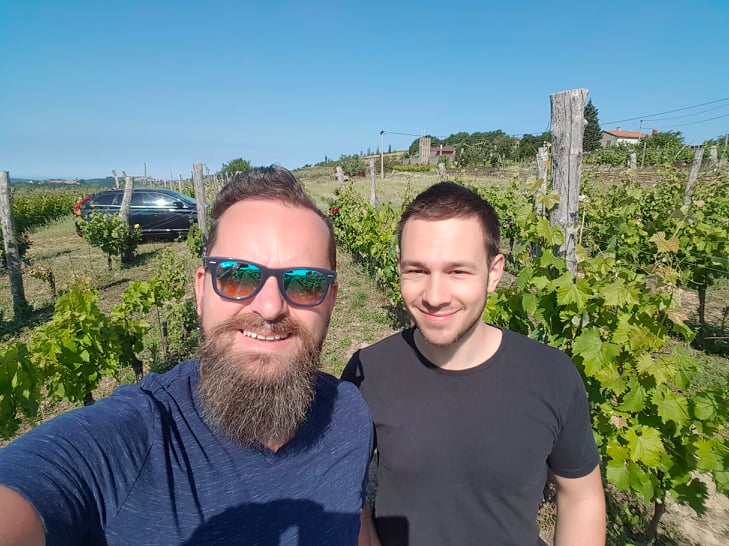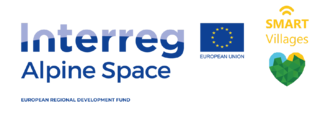-
Fostering sustainable development in agriculture, using IoT.
- Slovenia
- Zahodna Slovenia
- #smartagriculture, #IoT #ruraldevelopment, #technology
- Yes
-

- Local Region
- April 2020 - ongoing
-
We consider this is a good practice as it addresses the pressing issue of the sustainable viti-viniculture especially in rural areas. Our practice is cost efficient and helps winegrowers improve wine production and quality.
-
By providing an IoT architecture, this good practice of smart viticulture enables efficiency and productivity with a non-negligible impact on the environment.
In recent years, the use of various wireless sensors, drones, satellite images and other measurement tools has introduced the concept of a smart viticulture. Smart viticulture is based on observation, measurement and collection of environmental parameters to optimize wine production and reduce damaging environmental impact. However, the biggest disadvantage of smart viticulture are maintenance costs and the initial investing capital.
In addition to solving long-term environmental challenges caused by excessive consumption of drinking water and agrochemicals, this good practice provides the winemakers with access to necessary tools, data and skills as well. Supported by UL, this good practice will empower winegrowers with workable data which will enable them to better control their wine production and quality.
Overall, the developed good practice based on the IoT solutions of the architecture of LoRaWAN connectivity will lower production costs and consequently foster a more sustainable viti-viniculture.
This is a good practice of human-centered digital transformation with potential to be transferred to other regions, interested in the development of smart viticulture, which is fostering sustainable development in agriculture. The key successful factors are involvement of key stakeholders of winegrowers and provision of the IoT solution which is cost efficient, of low maintenance and is all and all durable. Provided IoT solution can also be easily applied to other agricultural activities. -
The IoT solution, developed within this good practice uses a sensor system with LoRaWAN connectivity, which is known for being cost efficient, is low maintenance and is durable. Initial founding is 2500 euros (equipment costs).
-
Two main challenges:
• Initial capital and maintenance costs;
• Ensuring more communication locally in order to change people’s behavior towards digital transformation (driving up the demand for innovative ICT-based solutions). - Emilija Stojmenova Duh
- University of Ljubljana, Faculty of electrical engineering
- emilija.stojmenova@fe.uni-lj.si
Smart Viticulture

By providing an IoT architecture, this good practice of smart viticulture enables efficiency and productivity with a non-negligible impact on the environment.
In recent years, the use of various wireless sensors, drones, satellite images and other measurement tools has introduced the concept of a smart viticulture. Smart viticulture is based on observation, measurement and collection of environmental parameters to optimize wine production and reduce damaging environmental impact. However, the biggest disadvantage of smart viticulture are maintenance costs and the initial investing capital.
In addition to solving long-term environmental challenges caused by excessive consumption of drinking water and agrochemicals, this good practice provides the winemakers with access to necessary tools, data and skills as well. Supported by UL, this good practice will empower winegrowers with workable data which will enable them to better control their wine production and quality.
Overall, the developed good practice based on the IoT solutions of the architecture of LoRaWAN connectivity will lower production costs and consequently foster a more sustainable viti-viniculture.
This is a good practice of human-centered digital transformation with potential to be transferred to other regions, interested in the development of smart viticulture, which is fostering sustainable development in agriculture. The key successful factors are involvement of key stakeholders of winegrowers and provision of the IoT solution which is cost efficient, of low maintenance and is all and all durable. Provided IoT solution can also be easily applied to other agricultural activities.
 Applicable in rural, non city areas
Applicable in rural, non city areas
 Local area
Local area Youth, Elderly, Students, Active working people
Youth, Elderly, Students, Active working people April 2020 - ongoing
April 2020 - ongoing
Dificulties encountered
Two main challenges: • Initial capital and maintenance costs; • Ensuring more communication locally in order to change people’s behavior towards digital transformation (driving up the demand for innovative ICT-based solutions).
Resources needed
The IoT solution, developed within this good practice uses a sensor system with LoRaWAN connectivity, which is known for being cost efficient, is low maintenance and is durable. Initial founding is 2500 euros (equipment costs).
Would you like to know more?
Contact the project authors for more information about project implementation, resources, planning and impact.
University of Ljubljana, Faculty of electrical engineering
Emilija Stojmenova Duh
emilija.stojmenova@fe.uni-lj.si
